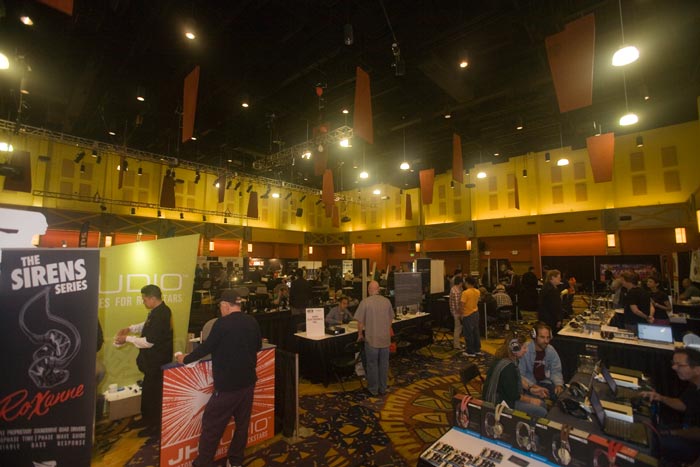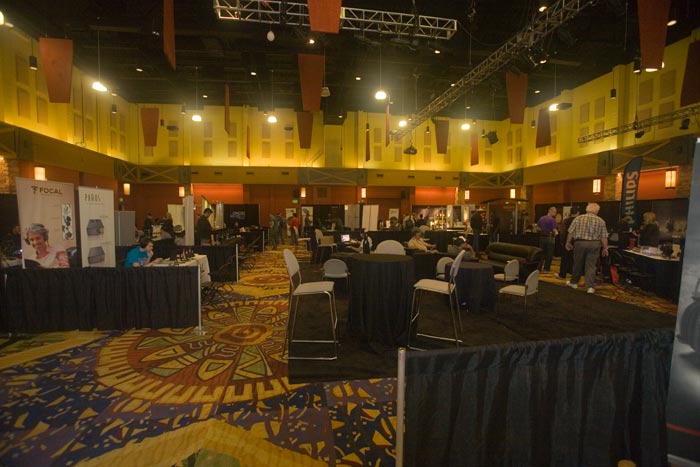RMAF 2013 Day 3 highlights
Day 3 is a shorter day, ending at 4:00 pm and after I took photos of the CanJam headphone area I wandered around some.

CanJam from the main entry door

CanJam: the middle aisle.
On the way to the show everyday driving in takes about an hour, and we would listen to music on the Jazz station (KUVO) and Classical station (KVOD), pre-packaged shows on (KUNC), and our local anything goes local station (KGNU). It was fund-raising time so we switched stations a lot.
And we realized that we hardly heard any of this kind of music at a show. And if they weren’t playing music that people usually listen to in the Real World ™, just what were they playing?
So I did a survey. Did not make it through the whole show, unfortunately, but here are some preliminary statistics.
20% were playing quiet classical music and opera (Some rooms were playing classical that was heavy on the organ to show off their bass capabilities – so this may count more as ‘traditional audiophile music’)
56% were playing traditional audiophile music. Soft rock. Female vocals. Often overly peppered with weird percussion noises.
6% were not playing music [not counting those that were ‘between songs’. I just hung out in these room until I could hear what they were going to play next]
6% Alternative rock, classic rock, modern pop
12% Jazz (about half of which was aggressive ‘straight ahead’ jazz, the other half easy to reproduce 4 or less piece jazz)
On the radio we usually listen to difficult classical [up-beat marches, Stravinsky, etc] as well as medium classical [like Beethoven, Brahms, etc], and quiet classical [like much of Mozart, some Bach, etc. mostly 1 – 4 musicians]. Also alternative rock [but not so much the seemingly ever present country flavored bar-band rock], opera, bluegrass, classic country, techno and new and classic rock and hip-hop and reggae and some modern pop and all kinds of jazz [but mostly difficult jazz as the rest reminds us too much of hi-fi show jazz].
So this leaves us with the problem that only about 12% of the music is what ‘real’ people [people who still listen to broadcast radio, that is, so maybe that is just people older than 30], in general, listen to. And probably even a lower percentage for people who listen mostly online.
In a large sense, classic rock is loved by most people, and by all ages, except by those who hate it. 😉 And this is really what people should be playing at shows [oh, I can hear the screaming from the what-about-tradition audiophiles even up hear on the mountain :-). For the, oh, 10% who hate classic rock, make sure you have a good collection of traditional classical and jazz available].
If a system can’t play the music people want to hear, you know, because it ‘sounds bad’ – well, then that is kind of a problem, isn’t it.
